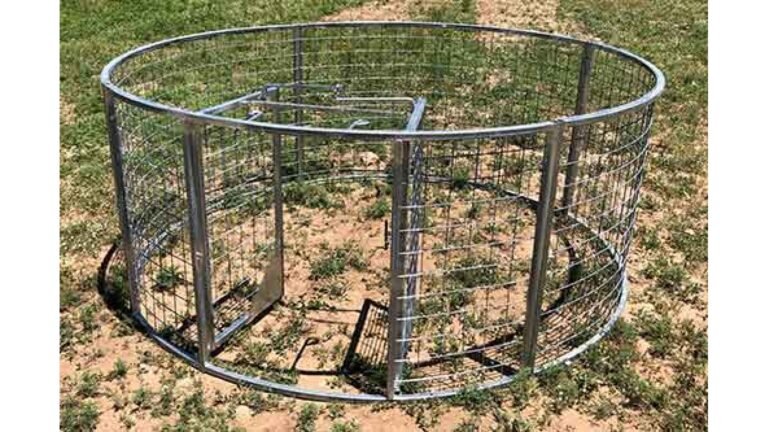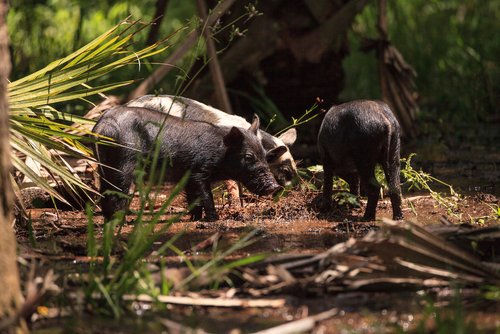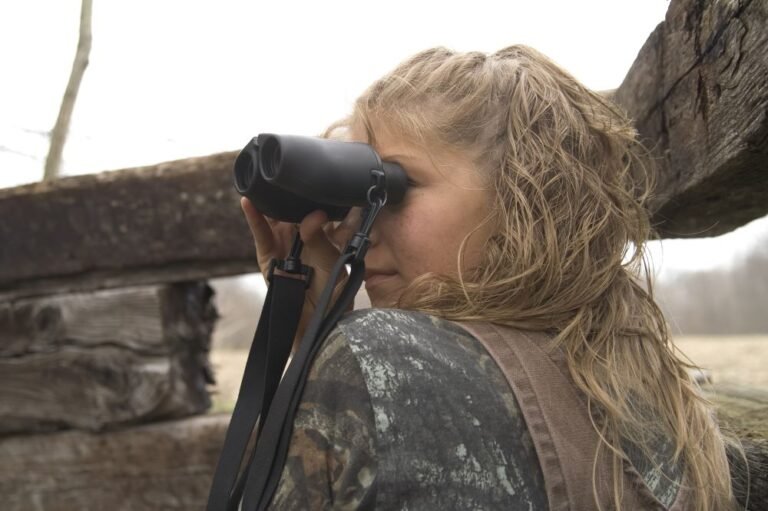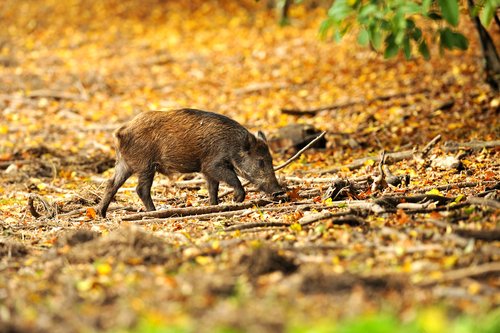Mastering Terrain: The Key to Successful Hog Hunting
Hog hunting is an exhilarating and challenging activity that takes avid hunters into the heart of varied landscapes. Whether trekking through dense forests, wading through marshy wetlands, or traversing rugged mountains, hog hunting requires adaptability and a deep understanding of the terrain. This article will explore the diverse terrain in hog hunting and discuss the strategies and equipment necessary to tackle each environment.
One of the most important aspects of hog hunting in varied landscapes is being prepared with the right gear and equipment. Before heading out into the great unknown, have a sturdy pair of boots that can withstand muddy swamps, slippery slopes, or rocky terrains.
A good pair of waterproof boots with excellent traction will keep your feet dry and prevent unfortunate accidents while hunting. When it comes to clothing, choose materials that are lightweight yet durable.
Opt for moisture-wicking fabrics that keep you cool in humid environments or warm in colder climates. Dressing in layers is also essential as it allows you to adjust your clothing according to temperature fluctuations throughout the day.
Apart from clothing and footwear, having a reliable backpack is crucial for storing all your essential items during your hunt. Ensure it has enough compartments to accommodate water bottles for hydration, snacks for energy boosts, emergency first-aid kits, and any additional gear such as binoculars or rangefinders.
As you embark on hog hunting adventures in swamps and wetlands, be prepared to encounter challenging terrain like thick mud or waist-deep water channels. Here’s where rubber boots with deep treads are handy; they provide excellent grip while wading through murky waters.
Navigating through forests and wooded areas poses its own set of challenges during hog hunting expeditions. A thick underbrush can make movement difficult and hinder visibility.
Equipping yourself with a machete or pruning shears is advisable to clear paths when necessary. Additionally, investing in a good GPS device or a reliable compass will help you avoid getting lost in the labyrinth of trees.
Stay tuned for the upcoming sections as we delve deeper into hog hunting challenges in open fields, mountains, hills, and desert and arid environments. Adapting to different terrains makes hog hunting an exciting adventure, and being well-prepared ensures you can enjoy every moment without any unnecessary setbacks.
Preparing for Varied Landscapes: Gear and Equipment
When it comes to hog hunting, one thing you can count on is that you’ll be hunting in varied landscapes. From dense forests to wide-open fields and swamps to arid deserts, hogs have no boundaries regarding their preferred habitats. So, if you’re planning a hog hunting adventure, preparing yourself with the right gear and equipment is crucial to help you adapt to different environments.
First things first, let’s talk about footwear. Investing in good waterproof boots is essential when hunting in swampy or wetland areas.
These boots will keep your feet dry and provide traction on slippery surfaces. Look for boots with deep treads that can grip mud and prevent you from slipping and sliding.
Consider wearing lightweight hiking boots that offer ankle support in forested areas with rugged and uneven terrain. These boots should have a sturdy sole to provide stability while traversing through thick underbrush and rough terrains.
Additionally, ensure your boots are quiet – noisy footwear can easily scare off hogs before you even get close. Camouflage becomes crucial when heading out into open fields or prairies for hog hunting.
Opt for clothing that matches the surrounding environment and helps break up your silhouette against the backdrop of tall grasses or agricultural fields. Camouflage jackets with multiple pockets are also handy for storing extra ammunition or other essential accessories within easy reach.
Regardless of the terrain you’re hunting in mountains or deserts- always carry a reliable GPS device or compass along with a topographic map of the area. These tools will help keep you oriented during long treks across unfamiliar terrains and ensure you don’t lose your way amidst vast landscapes.
Remember: hunting in varied landscapes requires adapting to different environments by equipping yourself with appropriate gear and equipment. So, suit up properly before embarking on your hog hunting adventure, and increase your chances of success while enjoying the thrill of exploring diverse terrains.
Hog Hunting in Swamps and Wetlands
can be a thrilling and challenging experience. These unique environments provide the perfect habitat for hogs, with their muddy terrain, dense vegetation, and abundant water sources.
However, they pose several challenges for hunters who venture into these areas. When hunting in swamps and wetlands, it is crucial to wear appropriate gear to withstand harsh conditions.
Waterproof boots are necessary to keep your feet dry as you trudge through the muddy terrain. Additionally, dressing in layers of lightweight, moisture-wicking clothing will help you stay comfortable throughout your hunt.
Navigating through dense vegetation can be quite tricky in swampy areas. Hogs use these thickets for cover and food sources such as roots and tubers.
As a hunter, you must adapt your approach by being extra cautious and moving slowly to avoid making excessive noise or getting caught up in tangled branches. One important aspect of hog hunting in swamps is understanding hog behavior in waterlogged areas.
Hogs are excellent swimmers, so it’s common to find them wallowing or fully submerged in muddy waters to cool off from the heat or evade predators. You may need to wade through shallow waters or even swim short distances while tracking them down.
To increase your chances of success when hunting hogs in swampy environments, consider setting up bait stations near standing water sources or along hog trails leading into open areas. Hogs have a strong sense of smell and will be lured by the scent of food from miles away.
Placing bait strategically within your hunting area can attract hogs within shooting range without revealing your position. Hog hunting in swamps and wetlands presents challenges but can offer bountiful rewards for those willing to adapt their strategies.
Hunters can increase their chances of success with proper gear, knowledge of hog behavior in soaked environments, and strategic placement of bait stations. So, next time you find yourself hunting in a swampy landscape, embrace the adventure and get ready for an adrenaline-pumping experience like no other.
Navigating Forests and Wooded Areas
Regarding hog hunting, one cannot ignore the thrill of tracking these wild creatures through dense forests and tangled wooded areas. Hunting in such varied landscapes requires a keen eye, quick reflexes, and an understanding of the unique challenges that come with it.
So, grab your gear, and let’s delve into the wilderness! As you step into a forest or wooded area, you’ll immediately notice the change in atmosphere.
The air is crisp and cool under the shade of towering trees, their branches forming a natural canopy overhead. This environment provides excellent cover for hogs, making it crucial to move quietly and with stealth.
Take slow steps, being mindful of twigs or dry leaves that could betray your whereabouts. The dense vegetation in forests can make spotting hogs challenging at times.
They blend seamlessly with their surroundings, their dark bodies camouflaged amidst the shadows of foliage. To increase your chances of success in this terrain, keep your eyes peeled for any movement or signs of disturbance in the undergrowth.
Look out for broken branches or fresh mud on tree trunks – telltale signs that hogs have been rooting around. When it comes to shot placement in wooded areas, accuracy is paramount.
The foliage can obstruct clear sightlines and limit your shooting angles. It’s essential to patiently wait for clear shots with a clean line of sight without obstacles blocking your target.
Aim for vital organs such as the heart or lungs to ensure a swift and humane kill. In addition to being alert and patient while hunting in forests or wooded areas, proper gear selection is vital for adapting to this environment successfully.
Opt for clothing that blends well with the surroundings – earth tones like brown or green are ideal as they help you remain inconspicuous amidst nature’s palette. Additionally, consider using calls or rattlers designed specifically for woodland environments, as they can attract curious hogs and bring them closer within your range.
Remember, navigating forests and wooded areas while hog hunting requires finesse, adaptability, and a deep appreciation for nature’s beauty. So, immerse yourself in the tranquility of the trees, embrace the thrill of the hunt, and let the forest guide you toward your hog-hunting success!
Conquering Hog Hunting Challenges in Open Fields
When it comes to hog hunting, open fields present their own set of challenges and opportunities.
As hunters, we must be prepared to face these expansive areas’ unique terrain and conditions. Hunting in open fields requires a different approach than other landscapes, but with the right strategies, you can maximize your chances of success.
One of the main challenges in open fields is the lack of cover. Unlike forests or swamps, where trees and vegetation provide natural concealment, open fields offer little protection for hunters.
This means that stealth becomes even more crucial. You’ll need to focus on staying low and using any available cover, like tall grasses or dips in the ground, to hide yourself from the keen senses of hogs.
Another aspect to consider when hunting in open fields is visibility. With fewer obstacles obstructing your view, hogs will better spot you from a distance.
To combat this, it’s essential to use binoculars or a spotting scope to scan the area before making any movements. By carefully observing your surroundings, you can identify potential hog activity and plan your approach accordingly.
Hogs often feed on crops such as corn or soybeans in open fields. Knowing where these food sources are located can greatly enhance your chances of success.
Consider contacting local landowners or farmers who may permit access to their properties for hunting purposes. By gaining permission to hunt on these lands and understanding hog feeding patterns within them, you’ll have a clear advantage when planning your strategy.
Being aware of wind direction is vital when hunting hogs in open fields. Wind is even more significant in carrying scents across long distances without trees or dense foliage to disrupt airflow.
Always pay attention to wind direction as you plan your stalk or set up blinds or stands. Position yourself upwind from where you expect hogs might appear, allowing the wind to carry your scent away from them.
Conquering hog hunting challenges in open fields requires adaptability and careful planning. The lack of cover, increased visibility, understanding of hog feeding patterns, and considering wind direction are all essential factors.
You can increase your chances of a successful hunt in open fields by honing your stealth skills, using binoculars to scan the area, locating food sources, and using wind to your advantage. So gear up, embrace the great outdoors, and prepare for an exhilarating hog-hunting adventure in these expansive terrains!
Mountains and Hills: Unique Terrain Considerations
Hog hunting in the mountains and hills brings a whole new set of challenges and adventures.
The rugged terrain, steep slopes, and rocky surfaces make it an exhilarating experience for hunters. However, adapting to these different environments requires careful planning and some specialized techniques.
When hunting hogs in mountainous regions, it’s important to consider the elevation. As you climb higher, the air becomes thinner, making it harder to breathe.
Take your time hiking uphill, and stay hydrated to avoid altitude sickness. Additionally, be cautious of loose rocks and uneven ground that can easily cause slips or falls.
The dense vegetation in mountainous areas can provide ample cover for hogs, making them harder to spot. To overcome this challenge, it’s essential to practice patience and move slowly through the terrain.
Utilize binoculars or a spotting scope to scan for any signs of hogs or disturbances in the vegetation. Another consideration when hunting in the mountains is shot placement.
Shooting on uneven terrain can be tricky as you may not have a steady shooting position. Finding stable footing before taking your shot is crucial to ensure accuracy and ethically harvest the hog without causing unnecessary suffering.
Please pay close attention to wind patterns in mountainous regions, as they can be unpredictable due to the twisting valleys and gusty conditions. Hogs have a keen sense of smell, so being downwind from your target is crucial for success.
Adjust your positioning accordingly based on prevailing wind directions. Hunting hogs in mountainous terrain offers a thrilling experience for those who enjoy adapting their skills in different environments.
Remember to take necessary precautions such as acclimatizing yourself at higher elevations, being cautious of steep slopes while hiking, utilizing optics effectively amidst dense vegetation cover, maintaining stability during shots on uneven ground, and considering wind patterns carefully during your hunt. Doing so will enhance your chances of a successful and fulfilling hog-hunting experience in the mountains and hills.
Adapting to Desert and Arid Environments
Hog hunting in desert and arid environments can present unique challenges for hunters. The scorching sun, dry heat, and lack of water sources make adapting your strategies and equipment crucial to ensure a successful hunt. When hunting in these landscapes, it’s essential to consider the characteristics of the terrain, the behavior of hogs in these environments, and the impact of extreme weather conditions.
Desert areas are often characterized by vast open land with sparse vegetation. In such landscapes, hogs tend to take cover in shaded areas during the day and become more active during cooler parts of the day or at night.
To increase your chances of success in hog hunting, scouting for areas where hogs are likely to seek shelter or find food sources, such as watering holes or patches of vegetation, is important. In arid environments, water becomes scarce for humans and animals.
Hogs rely on water sources for hydration and as prime spots for wallowing to cool down their bodies. Identifying reliable water sources is key when adapting your hunting strategy.
Look for natural springs, creeks, or artificial water troughs near feeding areas or known hog trails. When preparing for hog hunting in deserts or arid regions, it is crucial to take extra precautions due to extreme heat and dry conditions.
Be sure to wear lightweight clothing that provides ample protection from the sun while allowing breathability. Apply sunscreen liberally and use a wide-brimmed hat or neck gaiter to shield yourself from direct sunlight.
Staying hydrated is paramount; carry enough water during your hunt and drink regularly, even if you don’t feel thirsty. To increase your chances of success when adapting to desert landscapes during hog hunts, consider utilizing blinds strategically placed near feeding grounds or watering holes frequented by hogs.
This will allow you to remain concealed while patiently awaiting their arrival without exerting unnecessary energy in the heat. Additionally, consider using attractants such as food or scents to lure hogs to specific areas, increasing your opportunities for a successful hunt.
Hog hunting in desert and arid environments requires careful consideration of the unique challenges presented by these landscapes. Adapting your strategies and equipment to account for extreme heat, scarce water sources, and hogs’ behavior is vital.
Remember to scout for areas with adequate shelter or food sources, identify reliable water sources, dress appropriately for the climate, and consider employing blinds or attractants strategically. Doing so can increase your chances of a successful hog hunt in desert terrains.
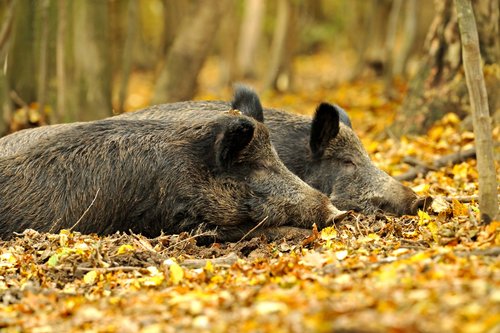
Conclusion
Hog hunting is an exhilarating and challenging adventure that takes you through various terrains. Hunters must adapt to different environments to succeed, from murky swamps to dense forests, open fields to rugged mountains, and even arid deserts. Each landscape presents its obstacles and requires specialized gear and tactics.
When hunting in swamps and wetlands, it’s crucial to be prepared for soggy ground, thick vegetation, and limited visibility. Wading through knee-deep water while carefully scanning the surroundings requires patience and stealth.
Equipping yourself with waterproof boots, lightweight clothing that dries quickly, and a reliable bug repellent will help you navigate this terrain effectively. Forests can be equally challenging due to dense foliage that obstructs your view.
Here, moving quietly and being aware of your surroundings is essential. Consider using camouflage clothing that blends with the environment while ensuring a clear line of sight for shooting opportunities.
Additionally, having a well-practiced skill in tracking becomes vital as hogs can easily disappear amongst the trees. Open fields present unique challenges, as hogs often have more space to roam freely.
Hunters should focus on long-range shooting skills to maximize success in these areas, as shots may need to be taken from considerable distances away. Employing binoculars or scopes can aid in spotting hogs from afar while allowing you to plan your approach carefully.
Mountains and hills provide an entirely different hunting experience altogether. These terrains demand physical endurance due to steep climbs and rocky paths.
Wear appropriate footwear with a good grip for stability as you navigate these challenging landscapes. Moreover, altitude changes may affect your breathing pattern during strenuous activities such as tracking or stalking.
Adapting to different environments is essential when hog hunting in varied landscapes. Understanding the unique challenges each terrain presents and equipping yourself with the appropriate gear and knowledge can increase your chances of a successful hunt.
So, embrace the adventure, prepare for the unexpected, and relish in the thrill of hog hunting across diverse terrains. Happy hunting!

